|
[1]
|
Cohen S (1965) The stimulation of epidermal proliferation by a specific protein (EGF). Dev Biol 12: 394–407. doi: 10.1016/0012-1606(65)90005-9

|
|
[2]
|
Cohen S, Carpenter G, Lembach KJ (1975) Interaction of epidermal growth factor (EGF) with cultured fibroblasts. Adv Metab Disord 8: 265–284. doi: 10.1016/B978-0-12-027308-9.50024-X

|
|
[3]
|
Carpenter G, King L Jr., Cohen S (1978) Epidermal growth factor stimulates phosphorylation in membrane preparations in vitro. Nature 276: 409–410. doi: 10.1038/276409a0

|
|
[4]
|
Lemmon MA, Schlessinger J (2010) Cell signaling by receptor tyrosine kinases. Cell 141: 1117–1134. doi: 10.1016/j.cell.2010.06.011

|
|
[5]
|
Lemmon MA, Schlessinger J, Ferguson KM (2014) The EGFR family: not so prototypical receptor tyrosine kinases. Cold Spring Harb Perspect Biol 6: a020768. doi: 10.1101/cshperspect.a020768

|
|
[6]
|
Kovacs E, Zorn JA, Huang Y, et al. (2015) A Structural Perspective on the Regulation of the Epidermal Growth Factor Receptor. Annu Rev Biochem. E-pub ahead of print.
|
|
[7]
|
Ullrich A, Schlessinger J (1990) Signal transduction by receptors with tyrosine kinase activity. Cell 61: 203–212. doi: 10.1016/0092-8674(90)90801-K

|
|
[8]
|
Moriki T, Maruyama H, Maruyama IN (2001) Activation of preformed EGF receptor dimers by ligand-induced rotation of the transmembrane domain. J Mol Biol 311: 1011–1026. doi: 10.1006/jmbi.2001.4923

|
|
[9]
|
Burgess AW, Cho HS, Eigenbrot C, et al. (2003) An open-and-shut case? Recent insights into the activation of EGF/ErbB receptors. Mol Cell 12: 541–552.
|
|
[10]
|
Yokoyama N, Miller WT (2003) Biochemical properties of the Cdc42-associated tyrosine kinase ACK1. Substrate specificity, authphosphorylation, and interaction with Hck. J Biol Chem 278: 47713–47723.
|
|
[11]
|
Burgess AW (2008) EGFR family: structure physiology signalling and therapeutic targets. Growth Factors 26: 263–274. doi: 10.1080/08977190802312844

|
|
[12]
|
Yarden Y, Sliwkowski MX (2001) Untangling the ErbB signalling network. Nat Rev Mol Cell Biol 2: 127–137. doi: 10.1038/35052073

|
|
[13]
|
Jura N, Shan Y, Cao X, et al. (2009) Structural analysis of the catalytically inactive kinase domain of the human EGF receptor 3. Proc Natl Acad Sci USA 106: 21608–21613. doi: 10.1073/pnas.0912101106

|
|
[14]
|
Endres NF, Engel K, Das R, et al. (2011) Regulation of the catalytic activity of the EGF receptor. Curr Opin Struct Biol 21: 777–784. doi: 10.1016/j.sbi.2011.07.007

|
|
[15]
|
Li S, Schmitz KR, Jeffrey PD, et al. (2005) Structural basis for inhibition of the epidermal growth factor receptor by cetuximab. Cancer Cell 7: 301–311. doi: 10.1016/j.ccr.2005.03.003

|
|
[16]
|
Vecchi M, Carpenter G (1997) Constitutive proteolysis of the ErbB-4 receptor tyrosine kinase by a unique, sequential mechanism. J Cell Biol 139: 995–1003. doi: 10.1083/jcb.139.4.995

|
|
[17]
|
Codony-Servat J, Albanell J, Lopez-Talavera JC, et al. (1999) Cleavage of the HER2 ectodomain is a pervanadate-activable process that is inhibited by the tissue inhibitor of metalloproteases-1 in breast cancer cells. Cancer Res 59: 1196–1201.
|
|
[18]
|
Ullrich A, Coussens L, Hayflick JS, et al. (1984) Human epidermal growth factor receptor cDNA sequence and aberrant expression of the amplified gene in A431 epidermoid carcinoma cells. Nature 309: 418–425. doi: 10.1038/309418a0

|
|
[19]
|
Gamou S, Shimizu N (1988) Glycosylation of the epidermal growth factor receptor and its relationship to membrane transport and ligand binding. J Biochem 104: 388–396.
|
|
[20]
|
Terman BI, Carrion ME, Kovacs E, et al. (1991) Identification of a new endothelial cell growth factor receptor tyrosine kinase. Oncogene 6: 1677–1683.
|
|
[21]
|
Holmes K, Roberts OL, Thomas AM, et al. (2007) Vascular endothelial growth factor receptor-2: structure, function, intracellular signalling and therapeutic inhibition. Cellular Signalling 19: 2003–2012. doi: 10.1016/j.cellsig.2007.05.013

|
|
[22]
|
Waltenberger J, Claesson-Welsh L, Siegbahn A, et al. (1994) Different signal transduction properties of KDR and Flt1, 2 receptors for vascular endothelial growth factor. J Biol Chem 269: 26988–26995.
|
|
[23]
|
Koch S, Claesson-Welsh L (2012) Signal transduction by vascular endothelial growth factor receptors. Cold Spring Harb Perspect Med 2: a006502.
|
|
[24]
|
Takahashi T, Shibuya M (1997) The 230 kDa mature form of KDR/Flk-1 (VEGF receptor-2) activates the PLC-gamma pathway and partially induces mitotic signals in NIH3T3 fibroblasts. Oncogene 14: 2079–2089. doi: 10.1038/sj.onc.1201047

|
|
[25]
|
Shinkai A, Ito M, Anazawa H, et al. (1998) Mapping of the sites involved in ligand association and dissociation at the extracellular domain of the kinase insert domain-containing receptor for vascular endothelial growth factor. J Biol Chem 273: 31283–31288. doi: 10.1074/jbc.273.47.31283

|
|
[26]
|
Ruch C, Skiniotis G, Steinmetz MO, et al. (2007) Structure of a VEGF-VEGF receptor complex determined by electron microscopy. Nat Struct Mol Biol 14: 249–250. doi: 10.1038/nsmb1202

|
|
[27]
|
Toffalini F, Demoulin JB (2010) New insights into the mechanisms of hematopoietic cell transformation by activated receptor tyrosine kinases. Blood 116: 2429–2437. doi: 10.1182/blood-2010-04-279752

|
|
[28]
|
Yang Y, Yuzawa S, Schlessinger J (2008) Contacts between membrane proximal regions of the PDGF receptor ectodomain are required for receptor activation but not for receptor dimerization. Proc Natl Acad Sci U S A 105: 7681–7686. doi: 10.1073/pnas.0802896105

|
|
[29]
|
De Meyts P, Whittaker J (2002) Structural biology of insulin and IGF1 receptors: implications for drug design. Nat Rev Drug Discov 1: 769–783. doi: 10.1038/nrd917

|
|
[30]
|
Heldin CH, Ostman A (1996) Ligand-induced dimerization of growth factor receptors: variations on the theme. Cytokine Growth Factor Rev 7: 3–10. doi: 10.1016/1359-6101(96)00002-0

|
|
[31]
|
Ward CW, Lawrence MC (2009) Ligand-induced activation of the insulin receptor: a multi-step process involving structural changes in both the ligand and the receptor. Bioessays 31: 422–434. doi: 10.1002/bies.200800210

|
|
[32]
|
Soos MA, Field CE, Siddle K (1993) Purified hybrid insulin/insulin-like growth factor-I receptors bind insulin-like growth factor-I, but not insulin, with high affinity. Biochem J 290 ( Pt 2): 419–426.
|
|
[33]
|
Xu H, Abe T, Liu JK, et al. (2014) Normal activation of discoidin domain receptor 1 mutants with disulfide cross-links, insertions, or deletions in the extracellular juxtamembrane region: mechanistic implications. J Biol Chem 289: 13565–13574. doi: 10.1074/jbc.M113.536144

|
|
[34]
|
Mason I (2007) Initiation to end point: the multiple roles of fibroblast growth factors in neural development. Nat Rev Neurosci 8: 583–596. doi: 10.1038/nrn2189

|
|
[35]
|
Mohammadi M, Olsen SK, Ibrahimi OA (2005) Structural basis for fibroblast growth factor receptor activation. Cytokine Growth Factor Rev 16: 107–137. doi: 10.1016/j.cytogfr.2005.01.008

|
|
[36]
|
Grunewald FS, Prota AE, Giese A, et al. (2010) Structure-function analysis of VEGF receptor activation and the role of coreceptors in angiogenic signaling. Biochim Biophys Acta 1804: 567–580. doi: 10.1016/j.bbapap.2009.09.002

|
|
[37]
|
Nolen B, Taylor S, Ghosh G (2004) Regulation of protein kinases; controlling activity through activation segment conformation. Mol Cell 15: 661–675. doi: 10.1016/j.molcel.2004.08.024

|
|
[38]
|
Hubbard SR (2004) Juxtamembrane autoinhibition in receptor tyrosine kinases. Nat Rev Mol Cell Biol 5: 464–471. doi: 10.1038/nrm1399

|
|
[39]
|
Huse M, Kuriyan J (2002) The conformational plasticity of protein kinases. Cell 109: 275–282. doi: 10.1016/S0092-8674(02)00741-9

|
|
[40]
|
Wybenga-Groot LE, Baskin B, Ong SH, et al. (2001) Structural basis for autoinhibition of the Ephb2 receptor tyrosine kinase by the unphosphorylated juxtamembrane region. Cell 106: 745–757. doi: 10.1016/S0092-8674(01)00496-2

|
|
[41]
|
Mol CD, Dougan DR, Schneider TR, et al. (2004) Structural basis for the autoinhibition and STI-571 inhibition of c-Kit tyrosine kinase. J Biol Chem 279: 31655–31663. doi: 10.1074/jbc.M403319200

|
|
[42]
|
Till JH, Becerra M, Watty A, et al. (2002) Crystal structure of the MuSK tyrosine kinase: insights into receptor autoregulation. Structure 10: 1187–1196. doi: 10.1016/S0969-2126(02)00814-6

|
|
[43]
|
Griffith J, Black J, Faerman C, et al. (2004) The structural basis for autoinhibition of FLT3 by the juxtamembrane domain. Mol Cell 13: 169–178. doi: 10.1016/S1097-2765(03)00505-7

|
|
[44]
|
Dibb NJ, Dilworth SM, Mol CD (2004) Switching on kinases: oncogenic activation of BRAF and the PDGFR family. Nat Rev Cancer 4: 718–727. doi: 10.1038/nrc1434

|
|
[45]
|
Heisermann GJ, Wiley HS, Walsh BJ, et al. (1990) Mutational removal of the Thr669 and Ser671 phosphorylation sites alters substrate specificity and ligand-induced internalization of the epidermal growth factor receptor. J Biol Chem 265: 12820–12827.
|
|
[46]
|
Welsh JB, Gill GN, Rosenfeld MG, et al. (1991) A negative feedback loop attenuates EGF-induced morphological changes. J Cell Biol 114: 533–543. doi: 10.1083/jcb.114.3.533

|
|
[47]
|
Hsu SC, Hung MC (2007) Characterization of a novel tripartite nuclear localization sequence in the EGFR family. J Biol Chem 282: 10432–10440. doi: 10.1074/jbc.M610014200

|
|
[48]
|
Red Brewer M, Choi SH, Alvarado D, et al. (2009) The juxtamembrane region of the EGF receptor functions as an activation domain. Mol Cell 34: 641–651. doi: 10.1016/j.molcel.2009.04.034

|
|
[49]
|
Jura N, Endres NF, Engel K, et al. (2009) Mechanism for activation of the EGF receptor catalytic domain by the juxtamembrane segment. Cell 137: 1293–1307. doi: 10.1016/j.cell.2009.04.025

|
|
[50]
|
Favelyukis S, Till JH, Hubbard SR, et al. (2001) Structure and autoregulation of the insulin-like growth factor 1 receptor kinase. Nat Struct Biol 8: 1058–1063. doi: 10.1038/nsb721

|
|
[51]
|
Koch S, Tugues S, Li X, et al. (2011) Signal transduction by vascular endothelial growth factor receptors. Biochem J 437: 169–183. doi: 10.1042/BJ20110301

|
|
[52]
|
Roskoski R Jr (2007) Vascular endothelial growth factor (VEGF) signaling in tumor progression. Crit Rev Oncol Hematol 62: 179–213. doi: 10.1016/j.critrevonc.2007.01.006

|
|
[53]
|
Kawamura H, Li X, Harper SJ, et al. (2008) Vascular endothelial growth factor (VEGF)-A165b is a weak in vitro agonist for VEGF receptor-2 due to lack of coreceptor binding and deficient regulation of kinase activity. Cancer Res 68: 4683–4692. doi: 10.1158/0008-5472.CAN-07-6577

|
|
[54]
|
Harper SJ, Bates DO (2008) VEGF-A splicing: the key to anti-angiogenic therapeutics? Nature Rev Cancer 8: 880–887. doi: 10.1038/nrc2505

|
|
[55]
|
Zhang X, Gureasko J, Shen K, et al. (2006) An allosteric mechanism for activation of the kinase domain of epidermal growth factor receptor. Cell 125: 1137–1149. doi: 10.1016/j.cell.2006.05.013

|
|
[56]
|
Knowles PP, Murray-Rust J, Kjaer S, et al. (2006) Structure and chemical inhibition of the RET tyrosine kinase domain. J Biol Chem 281: 33577–33587. doi: 10.1074/jbc.M605604200

|
|
[57]
|
Pawson T (2004) Specificity in signal transduction: from phosphotyrosine-SH2 domain interactions to complex cellular systems. Cell 116: 191–203. doi: 10.1016/S0092-8674(03)01077-8

|
|
[58]
|
Schlessinger J, Lemmon MA (2003) SH2 and PTB domains in tyrosine kinase signaling. Sci STKE 2003: RE12.
|
|
[59]
|
Eswarakumar VP, Lax I, Schlessinger J (2005) Cellular signaling by fibroblast growth factor receptors. Cytokine Growth Factor Rev 16: 139–149. doi: 10.1016/j.cytogfr.2005.01.001

|
|
[60]
|
Seet BT, Dikic I, Zhou MM, et al. (2006) Reading protein modifications with interaction domains. Nat Rev Mol Cell Biol 7: 473–483. doi: 10.1038/nrm1960

|
|
[61]
|
Ladbury JE, Arold S (2000) Searching for specificity in SH domains. Chem Biol 7: R3–8. doi: 10.1016/S1074-5521(00)00067-3

|
|
[62]
|
Eck MJ, Pluskey S, Trub T, et al. (1996) Spatial constraints on the recognition of phosphoproteins by the tandem SH2 domains of the phosphatase SH-PTP2. Nature 379: 277–280. doi: 10.1038/379277a0

|
|
[63]
|
Pawson T (2007) Dynamic control of signaling by modular adaptor proteins. Curr Opin Cell Biol 19: 112–116. doi: 10.1016/j.ceb.2007.02.013

|
|
[64]
|
Songyang Z, Shoelson SE, Chaudhuri M, et al. (1993) SH2 domains recognize specific phosphopeptide sequences. Cell 72: 767–778. doi: 10.1016/0092-8674(93)90404-E

|
|
[65]
|
Waksman G, Shoelson SE, Pant N, et al. (1993) Binding of a high affinity phosphotyrosyl peptide to the Src SH2 domain: crystal structures of the complexed and peptide-free forms. Cell 72: 779–790. doi: 10.1016/0092-8674(93)90405-F

|
|
[66]
|
Rhee SG (2001) Regulation of phosphoinositide-specific phospholipase C. Annu Rev Biochem 70: 281–312. doi: 10.1146/annurev.biochem.70.1.281

|
|
[67]
|
Chattopadhyay A, Vecchi M, Ji Q, et al. (1999) The role of individual SH2 domains in mediating association of phospholipase C-gamma1 with the activated EGF receptor. J Biol Chem 274: 26091–26097. doi: 10.1074/jbc.274.37.26091

|
|
[68]
|
Bae JH, Lew ED, Yuzawa S, et al. (2009) The selectivity of receptor tyrosine kinase signaling is controlled by a secondary SH2 domain binding site. Cell 138: 514–524. doi: 10.1016/j.cell.2009.05.028

|
|
[69]
|
Marshall CJ (1995) Specificity of receptor tyrosine kinase signaling: transient versus sustained extracellular signal-regulated kinase activation. Cell 80: 179–185. doi: 10.1016/0092-8674(95)90401-8

|
|
[70]
|
Kitano H (2004) Biological robustness. Nat Rev Genet 5: 826–837. doi: 10.1038/nrg1471

|
|
[71]
|
Kholodenko BN (2006) Cell-signalling dynamics in time and space. Nat Rev Mol Cell Biol 7: 165–176. doi: 10.1038/nrm1838

|
|
[72]
|
Ostman A, Bohmer FD (2001) Regulation of receptor tyrosine kinase signaling by protein tyrosine phosphatases. Trends Cell Biol 11: 258–266. doi: 10.1016/S0962-8924(01)01990-0

|
|
[73]
|
Bae YS, Kang SW, Seo MS, et al. (1997) Epidermal growth factor (EGF)-induced generation of hydrogen peroxide. Role in EGF receptor-mediated tyrosine phosphorylation. J Biol Chem 272: 217–221.
|
|
[74]
|
Buday L, Warne PH, Downward J (1995) Downregulation of the Ras activation pathway by MAP kinase phosphorylation of Sos. Oncogene 11: 1327–1331.
|
|
[75]
|
Mittar S, Ulyatt C, Howell GJ, et al. (2009) VEGFR1 receptor tyrosine kinase localization to the Golgi apparatus is calcium-dependent. Exp Cell Res 315: 877–889. doi: 10.1016/j.yexcr.2008.12.020

|
|
[76]
|
Goh LK, Sorkin A (2013) Endocytosis of receptor tyrosine kinases. Cold Spring Harb Perspect Biol 5: a017459.
|
|
[77]
|
Sorkin A, Goh LK (2009) Endocytosis and intracellular trafficking of ErbBs. Exp Cell Res 315: 683–696. doi: 10.1016/j.yexcr.2008.07.029

|
|
[78]
|
Auciello G, Cunningham DL, Tatar T, et al. (2013) Regulation of fibroblast growth factor receptor signalling and trafficking by Src and Eps8. J Cell Sci 126: 613–624. doi: 10.1242/jcs.116228

|
|
[79]
|
Ewan LC, Jopling HM, Jia H, et al. (2006) Intrinsic tyrosine kinase activity is required for vascular endothelial growth factor receptor 2 ubiquitination, sorting and degradation in endothelial cells. Traffic 7: 1270–1282. doi: 10.1111/j.1600-0854.2006.00462.x

|
|
[80]
|
Sigismund S, Woelk T, Puri C, et al. (2005) Clathrin-independent endocytosis of ubiquitinated cargos. Proc Natl Acad Sci USA 102: 2760–2765. doi: 10.1073/pnas.0409817102

|
|
[81]
|
Bruns AF, Herbert SP, Odell AF, et al. (2010) Ligand-stimulated VEGFR2 signaling is regulated by co-ordinated trafficking and proteolysis. Traffic 11: 161–174. doi: 10.1111/j.1600-0854.2009.01001.x

|
|
[82]
|
Henriksen L, Grandal MV, Knudsen SL, et al. (2013) Internalization mechanisms of the epidermal growth factor receptor after activation with different ligands. PLoS One 8: e58148. doi: 10.1371/journal.pone.0058148

|
|
[83]
|
Miaczynska M (2013) Effects of membrane trafficking on signaling by receptor tyrosine kinases. Cold Spring Harb Perspect Biol 5: a009035. doi: 10.1101/cshperspect.a009035

|
|
[84]
|
de Melker AA, van der Horst G, Calafat J, et al. (2001) c-Cbl ubiquitinates the EGF receptor at the plasma membrane and remains receptor associated throughout the endocytic route. J Cell Sci 114: 2167–2178.
|
|
[85]
|
Duval M, Bedard-Goulet S, Delisle C, et al. (2003) Vascular endothelial growth factor-dependent down-regulation of Flk-1/KDR involves Cbl-mediated ubiquitination. Consequences on nitric oxide production from endothelial cells. J Biol Chem 278: 20091–20097.
|
|
[86]
|
Citri A, Alroy I, Lavi S, et al. (2002) Drug-induced ubiquitylation and degradation of ErbB receptor tyrosine kinases: implications for cancer therapy. EMBO J 21: 2407–2417. doi: 10.1093/emboj/21.10.2407

|
|
[87]
|
Xu Q (2002) Role of heat shock proteins in atherosclerosis. Arterioscler Thromb Vasc Biol 22: 1547–1559. doi: 10.1161/01.ATV.0000029720.59649.50

|
|
[88]
|
Ehrlich ES, Wang T, Luo K, et al. (2009) Regulation of Hsp90 client proteins by a Cullin5-RING E3 ubiquitin ligase. Proc Natl Acad Sci USA 106: 20330–20335. doi: 10.1073/pnas.0810571106

|
|
[89]
|
Bruns AF, Yuldasheva N, Latham AM, et al. (2012) A heat-shock protein axis regulates VEGFR2 proteolysis, blood vessel development and repair. PLoS One 7: e48539. doi: 10.1371/journal.pone.0048539

|
|
[90]
|
Samant RS, Clarke PA, Workman P (2014) E3 ubiquitin ligase Cullin-5 modulates multiple molecular and cellular responses to heat shock protein 90 inhibition in human cancer cells. Proc Natl Acad Sci U S A 111: 6834–6839. doi: 10.1073/pnas.1322412111

|
|
[91]
|
Ascano M, Richmond A, Borden P, et al. (2009) Axonal targeting of Trk receptors via transcytosis regulates sensitivity to neurotrophin responses. J Neurosci 29: 11674–11685. doi: 10.1523/JNEUROSCI.1542-09.2009

|
|
[92]
|
Lazo OM, Gonzalez A, Ascano M, et al. (2013) BDNF regulates Rab11-mediated recycling endosome dynamics to induce dendritic branching. J Neurosci 33: 6112–6122. doi: 10.1523/JNEUROSCI.4630-12.2013

|
|
[93]
|
Chen ZY, Ieraci A, Tanowitz M, et al. (2005) A novel endocytic recycling signal distinguishes biological responses of Trk neurotrophin receptors. Mol Biol Cell 16: 5761–5772. doi: 10.1091/mbc.E05-07-0651

|
|
[94]
|
Sadowski L, Pilecka I, Miaczynska M (2009) Signaling from endosomes: location makes a difference. Exp Cell Res 315: 1601–1609. doi: 10.1016/j.yexcr.2008.09.021

|
|
[95]
|
Egea J, Klein R (2007) Bidirectional Eph-ephrin signaling during axon guidance. Trends Cell Biol 17: 230–238. doi: 10.1016/j.tcb.2007.03.004

|
|
[96]
|
Williams CC, Allison JG, Vidal GA, et al. (2004) The ERBB4/HER4 receptor tyrosine kinase regulates gene expression by functioning as a STAT5A nuclear chaperone. J Cell Biol 167: 469–478. doi: 10.1083/jcb.200403155

|
|
[97]
|
Tseng HC, Lyu PC, Lin WC (2010) Nuclear localization of orphan receptor protein kinase (Ror1) is mediated through the juxtamembrane domain. BMC Cell Biol 11: 48. doi: 10.1186/1471-2121-11-48

|
|
[98]
|
Wang YN, Hung MC (2012) Nuclear functions and subcellular trafficking mechanisms of the epidermal growth factor receptor family. Cell Biosci 2: 13. doi: 10.1186/2045-3701-2-13

|
|
[99]
|
Schlessinger J, Lemmon MA (2006) Nuclear signaling by receptor tyrosine kinases: the first robin of spring. Cell 127: 45–48. doi: 10.1016/j.cell.2006.09.013

|
|
[100]
|
Kamio T, Shigematsu K, Sou H, et al. (1990) Immunohistochemical expression of epidermal growth factor receptors in human adrenocortical carcinoma. Hum Pathol 21: 277–282. doi: 10.1016/0046-8177(90)90227-V

|
|
[101]
|
Marti U, Burwen SJ, Wells A, et al. (1991) Localization of epidermal growth factor receptor in hepatocyte nuclei. Hepatology 13: 15–20. doi: 10.1002/hep.1840130104

|
|
[102]
|
Lo HW, Ali-Seyed M, Wu Y, et al. (2006) Nuclear-cytoplasmic transport of EGFR involves receptor endocytosis, importin beta1 and CRM1. J Cell Biochem 98: 1570–1583. doi: 10.1002/jcb.20876

|
|
[103]
|
Brand TM, Iida M, Li C, et al. (2011) The nuclear epidermal growth factor receptor signaling network and its role in cancer. Discov Med 12: 419–432.
|
|
[104]
|
Domingues I, Rino J, Demmers JA, et al. (2011) VEGFR2 translocates to the nucleus to regulate its own transcription. PLoS One 6: e25668. doi: 10.1371/journal.pone.0025668

|
|
[105]
|
Wang YN, Wang H, Yamaguchi H, et al. (2010) COPI-mediated retrograde trafficking from the Golgi to the ER regulates EGFR nuclear transport. Biochem Biophys Res Commun 399: 498–504. doi: 10.1016/j.bbrc.2010.07.096

|
|
[106]
|
Forbes SA, Tang G, Bindal N, et al. (2010) COSMIC (the Catalogue of Somatic Mutations in Cancer): a resource to investigate acquired mutations in human cancer. Nucleic Acids Res 38: D652–657. doi: 10.1093/nar/gkp995

|
|
[107]
|
Yuzawa S, Opatowsky Y, Zhang Z, et al. (2007) Structural basis for activation of the receptor tyrosine kinase KIT by stem cell factor. Cell 130: 323–334. doi: 10.1016/j.cell.2007.05.055

|
|
[108]
|
Corless CL, Heinrich MC (2008) Molecular pathobiology of gastrointestinal stromal sarcomas. Annu Rev Pathol 3: 557–586. doi: 10.1146/annurev.pathmechdis.3.121806.151538

|
|
[109]
|
Hanahan D, Weinberg RA (2011) Hallmarks of cancer: the next generation. Cell 144: 646–674. doi: 10.1016/j.cell.2011.02.013

|
|
[110]
|
Folkman J (1971) Tumor angiogenesis: therapeutic implications. N Engl J Med 285: 1182–1186. doi: 10.1056/NEJM197111182852108

|
|
[111]
|
Goel HL, Mercurio AM (2013) VEGF targets the tumour cell. Nat Rev Cancer 13: 871–882. doi: 10.1038/nrc3627

|
|
[112]
|
Lichtenberger BM, Tan PK, Niederleithner H, et al. (2010) Autocrine VEGF signaling synergizes with EGFR in tumor cells to promote epithelial cancer development. Cell 140: 268–279. doi: 10.1016/j.cell.2009.12.046

|
|
[113]
|
Schoeffner DJ, Matheny SL, Akahane T, et al. (2005) VEGF contributes to mammary tumor growth in transgenic mice through paracrine and autocrine mechanisms. Lab Invest 85: 608–623. doi: 10.1038/labinvest.3700258

|
|
[114]
|
Ruan GX, Kazlauskas A (2013) Lactate engages receptor tyrosine kinases Axl, Tie2, and vascular endothelial growth factor receptor 2 to activate phosphoinositide 3-kinase/Akt and promote angiogenesis. J Biol Chem 288: 21161–21172. doi: 10.1074/jbc.M113.474619

|
|
[115]
|
Warburg O, Wind F, Negelein E (1927) The Metabolism of Tumors in the Body. J Gen Physiol 8: 519–530.
|
|
[116]
|
Sonveaux P, Copetti T, De Saedeleer CJ, et al. (2012) Targeting the lactate transporter MCT1 in endothelial cells inhibits lactate-induced HIF-1 activation and tumor angiogenesis. Plos One 7: e33418. doi: 10.1371/journal.pone.0033418

|
|
[117]
|
De Saedeleer CJ, Copetti T, Porporato PE, et al. (2012) Lactate activates HIF-1 in oxidative but not in Warburg-phenotype human tumor cells. Plos One 7: e46571. doi: 10.1371/journal.pone.0046571

|
|
[118]
|
Trabold O, Wagner S, Wicke C, et al. (2003) Lactate and oxygen constitute a fundamental regulatory mechanism in wound healing. Wound Repair Regen 11: 504–509. doi: 10.1046/j.1524-475X.2003.11621.x

|
|
[119]
|
Porporato PE, Payen VL, De Saedeleer CJ, et al. (2012) Lactate stimulates angiogenesis and accelerates the healing of superficial and ischemic wounds in mice. Angiogenesis 15: 581–592. doi: 10.1007/s10456-012-9282-0

|
|
[120]
|
Hynes NE, Lane HA (2005) ERBB receptors and cancer: the complexity of targeted inhibitors. Nat Rev Cancer 5: 341–354. doi: 10.1038/nrc1609

|
|
[121]
|
Ohsaki Y, Tanno S, Fujita Y, et al. (2000) Epidermal growth factor receptor expression correlates with poor prognosis in non-small cell lung cancer patients with p53 overexpression. Oncol Rep 7: 603–607.
|
|
[122]
|
Nicholson RI, Gee JM, Harper ME (2001) EGFR and cancer prognosis. Eur J Cancer 37 Suppl 4: S9–15.
|
|
[123]
|
Fang K (1996) An enhanced and sensitive autocrine stimulation by transforming growth factor-alpha is acquired in the brain metastatic variant of a human non-small-cell lung cancer cell line. Br J Cancer 74: 1776–1782. doi: 10.1038/bjc.1996.629

|
|
[124]
|
Mendelsohn J (1992) Epidermal growth factor receptor as a target for therapy with antireceptor monoclonal antibodies. J Natl Cancer Inst Monogr 13: 125–131.
|
|
[125]
|
Kosaka T, Yatabe Y, Endoh H, et al. (2004) Mutations of the epidermal growth factor receptor gene in lung cancer: biological and clinical implications. Cancer Res 64: 8919–8923. doi: 10.1158/0008-5472.CAN-04-2818

|
|
[126]
|
Sharma SV, Bell DW, Settleman J, et al. (2007) Epidermal growth factor receptor mutations in lung cancer. Nat Rev Cancer 7: 169–181. doi: 10.1038/nrc2088

|
|
[127]
|
Kim KS, Jeong JY, Kim YC, et al. (2005) Predictors of the response to gefitinib in refractory non-small cell lung cancer. Clin Cancer Res 11: 2244–2251. doi: 10.1158/1078-0432.CCR-04-2081

|
|
[128]
|
Bell DW, Lynch TJ, Haserlat SM, et al. (2005) Epidermal growth factor receptor mutations and gene amplification in non-small-cell lung cancer: molecular analysis of the IDEAL/INTACT gefitinib trials. J Clin Oncol 23: 8081–8092. doi: 10.1200/JCO.2005.02.7078

|
|
[129]
|
Jin F, Hagemann N, Brockmeier U, et al. (2013) LDL attenuates VEGF-induced angiogenesis via mechanisms involving VEGFR2 internalization and degradation following endosome-trans-Golgi network trafficking. Angiogenesis 16: 625–637. doi: 10.1007/s10456-013-9340-2

|
|
[130]
|
Tirziu D, Moodie KL, Zhuang ZW, et al. (2005) Delayed arteriogenesis in hypercholesterolemic mice. Circulation 112: 2501-2509. doi: 10.1161/CIRCULATIONAHA.105.542829

|
|
[131]
|
Van Belle E, Rivard A, Chen D, et al. (1997) Hypercholesterolemia attenuates angiogenesis but does not preclude augmentation by angiogenic cytokines. Circulation 96: 2667-2674. doi: 10.1161/01.CIR.96.8.2667

|
|
[132]
|
Rask-Madsen C, King GL (2013) Vascular complications of diabetes: mechanisms of injury and protective factors. Cell Metab 17: 20–33. doi: 10.1016/j.cmet.2012.11.012

|
|
[133]
|
Simons M (2005) Angiogenesis, arteriogenesis, and diabetes: paradigm reassessed? J Am Coll Cardiol 46: 835–837. doi: 10.1016/j.jacc.2005.06.008

|
|
[134]
|
Werner GS, Richartz BM, Heinke S, et al. (2003) Impaired acute collateral recruitment as a possible mechanism for increased cardiac adverse events in patients with diabetes mellitus. Eur Heart J 24: 1134–1142. doi: 10.1016/S0195-668X(03)00187-8

|
|
[135]
|
Warren CM, Ziyad S, Briot A, et al. (2014) A ligand-independent VEGFR2 signaling pathway limits angiogenic responses in diabetes. Sci Signal 7: ra1. doi: 10.1126/scisignal.2004235

|
|
[136]
|
Deng CX, Wynshaw-Boris A, Shen MM, et al. (1994) Murine FGFR-1 is required for early postimplantation growth and axial organization. Genes Dev 8: 3045–3057. doi: 10.1101/gad.8.24.3045

|
|
[137]
|
Yamaguchi TP, Harpal K, Henkemeyer M, et al. (1994) fgfr-1 is required for embryonic growth and mesodermal patterning during mouse gastrulation. Genes Dev 8: 3032–3044. doi: 10.1101/gad.8.24.3032

|
|
[138]
|
White KE, Cabral JM, Davis SI, et al. (2005) Mutations that cause osteoglophonic dysplasia define novel roles for FGFR1 in bone elongation. Am J Hum Genet 76: 361–367. doi: 10.1086/427956

|
|
[139]
|
Shiang R, Thompson LM, Zhu Y-Z, et al. (1994) Mutations in the transmembrane domain of FGFR3 cause the most common genetic form of dwarfism, achondroplasia. Cell 78: 335–342. doi: 10.1016/0092-8674(94)90302-6

|
|
[140]
|
Jacob AL, Smith C, Partanen J, et al. (2006) Fibroblast growth factor receptor 1 signaling in the osteo-chondrogenic cell lineage regulates sequential steps of osteoblast maturation. Dev Biol 296: 315–328. doi: 10.1016/j.ydbio.2006.05.031

|
|
[141]
|
Su N, Jin M, Chen L (2014) Role of FGF/FGFR signaling in skeletal development and homeostasis: learning from mouse models. Bone Res 2: 14003. doi: 10.1038/boneres.2014.3

|
|
[142]
|
Shawver LK, Slamon D, Ullrich A (2002) Smart drugs: tyrosine kinase inhibitors in cancer therapy. Cancer Cell 1: 117–123. doi: 10.1016/S1535-6108(02)00039-9

|
|
[143]
|
Ludwig DL, Pereira DS, Zhu Z, et al. (2003) Monoclonal antibody therapeutics and apoptosis. Oncogene 22: 9097–9106. doi: 10.1038/sj.onc.1207104

|
|
[144]
|
Fauvel B, Yasri A (2014) Antibodies directed against receptor tyrosine kinases: current and future strategies to fight cancer. MAbs 6: 838–851. doi: 10.4161/mabs.29089

|
|
[145]
|
Ferrara N, Kerbel RS (2005) Angiogenesis as a therapeutic target. Nature 438: 967–974. doi: 10.1038/nature04483

|
|
[146]
|
Carmeliet P (2005) Angiogenesis in life, disease and medicine. Nature 438: 932–936. doi: 10.1038/nature04478

|
|
[147]
|
Fontanella C, Ongaro E, Bolzonello S, et al. (2014) Clinical advances in the development of novel VEGFR2 inhibitors. Ann Transl Med 2: 123.
|
|
[148]
|
Kankanala J, Latham AM, Johnson AP, et al. (2012) A combinatorial in silico and cellular approach to identify a new class of compounds that target VEGFR2 receptor tyrosine kinase activity and angiogenesis. Br J Pharmacol 166: 737–748. doi: 10.1111/j.1476-5381.2011.01801.x

|
|
[149]
|
Chow LQ, Eckhardt SG (2007) Sunitinib: from rational design to clinical efficacy. J Clin Oncol 25: 884–896. doi: 10.1200/JCO.2006.06.3602

|
|
[150]
|
Ghatalia P, Morgan CJ, Je Y, et al. (2014) Congestive heart failure with vascular endothelial growth factor receptor tyrosine kinase inhibitors. Crit Rev Oncol Hematol.
|
|
[151]
|
Jain RK, Duda DG, Clark JW, et al. (2006) Lessons from phase III clinical trials on anti-VEGF therapy for cancer. Nat Clin Pract Oncol 3: 24–40.
|
|
[152]
|
Mendel DB, Laird AD, Xin X, et al. (2003) In vivo antitumor activity of SU11248, a novel tyrosine kinase inhibitor targeting vascular endothelial growth factor and platelet-derived growth factor receptors: determination of a pharmacokinetic/pharmacodynamic relationship. Clin Cancer Res 9: 327–337.
|
|
[153]
|
Hasinoff BB, Patel D (2010) The lack of target specificity of small molecule anticancer kinase inhibitors is correlated with their ability to damage myocytes in vitro. Toxicol Appl Pharmacol 249: 132–139. doi: 10.1016/j.taap.2010.08.026

|
|
[154]
|
Knights V, Cook SJ (2010) De-regulated FGF receptors as therapeutic targets in cancer. Pharmacol Ther 125: 105–117. doi: 10.1016/j.pharmthera.2009.10.001

|
|
[155]
|
Zhang S, Cao Z, Tian H, et al. (2011) SKLB1002, a novel potent inhibitor of VEGF receptor 2 signaling, inhibits angiogenesis and tumor growth in vivo. Clin Cancer Res 17: 4439–4450. doi: 10.1158/1078-0432.CCR-10-3109

|
|
[156]
|
Harris PA, Cheung M, Hunter RN, 3rd, et al. (2005) Discovery and evaluation of 2-anilino-5-aryloxazoles as a novel class of VEGFR2 kinase inhibitors. J Med Chem 48: 1610–1619. doi: 10.1021/jm049538w

|
|
[157]
|
Miyazaki Y, Matsunaga S, Tang J, et al. (2005) Novel 4-amino-furo[2,3-d]pyrimidines as Tie-2 and VEGFR2 dual inhibitors. Bioorg Med Chem Lett 15: 2203–2207. doi: 10.1016/j.bmcl.2005.03.034

|
|
[158]
|
Latham AM, Bruns AF, Kankanala J, et al. (2012) Indolinones and anilinophthalazines differentially target VEGF-A- and basic fibroblast growth factor-mediated responses in primary human endothelial cells. Br J Pharmacol 165: 245–259. doi: 10.1111/j.1476-5381.2011.01545.x

|
|
[159]
|
Zhou T, Commodore L, Huang WS, et al. (2010) Structural analysis of DFG-in and DFG-out dual Src-Abl inhibitors sharing a common vinyl purine template. Chem Biol Drug Des 75: 18–28. doi: 10.1111/j.1747-0285.2009.00905.x

|
|
[160]
|
Imrie H, Abbas A, Viswambharan H, et al. (2009) Vascular insulin-like growth factor-I resistance and diet-induced obesity. Endocrinology 150: 4575–4582. doi: 10.1210/en.2008-1641

|
|
[161]
|
Canfield K, Li J, Wilkins OM, et al. (2015) Receptor tyrosine kinase ERBB4 mediates acquired resistance to ERBB2 inhibitors in breast cancer cells. Cell Cycle 14: 648–655.
|
|
[162]
|
Johnston S, Trudeau M, Kaufman B, et al. (2008) Phase II study of predictive biomarker profiles for response targeting human epidermal growth factor receptor 2 (HER-2) in advanced inflammatory breast cancer with lapatinib monotherapy. J Clin Oncol 26: 1066–1072. doi: 10.1200/JCO.2007.13.9949

|
|
[163]
|
Kaufman B, Stein S, Casey MA, et al. (2008) Lapatinib in combination with capecitabine in the management of ErbB2-positive (HER2-positive) advanced breast cancer. Biologics 2: 61–65.
|
|
[164]
|
Sequist LV, Lynch TJ (2008) EGFR tyrosine kinase inhibitors in lung cancer: an evolving story. Annu Rev Med 59: 429–442. doi: 10.1146/annurev.med.59.090506.202405

|
|
[165]
|
Rusch V, Baselga J, Cordon-Cardo C, et al. (1993) Differential expression of the epidermal growth factor receptor and its ligands in primary non-small cell lung cancers and adjacent benign lung. Cancer Res 53: 2379–2385.
|
|
[166]
|
Dutu T, Michiels S, Fouret P, et al. (2005) Differential expression of biomarkers in lung adenocarcinoma: a comparative study between smokers and never-smokers. Ann Oncol 16: 1906–1914. doi: 10.1093/annonc/mdi408

|
|
[167]
|
Wakeling AE, Guy SP, Woodburn JR, et al. (2002) ZD1839 (Iressa): an orally active inhibitor of epidermal growth factor signaling with potential for cancer therapy. Cancer Res 62: 5749–5754.
|
|
[168]
|
Giaccone G, Herbst RS, Manegold C, et al. (2004) Gefitinib in combination with gemcitabine and cisplatin in advanced non-small-cell lung cancer: a phase III trial--INTACT 1. J Clin Oncol 22: 777–784. doi: 10.1200/JCO.2004.08.001

|
|
[169]
|
Herbst RS, Giaccone G, Schiller JH, et al. (2004) Gefitinib in combination with paclitaxel and carboplatin in advanced non-small-cell lung cancer: a phase III trial--INTACT 2. J Clin Oncol 22: 785–794. doi: 10.1200/JCO.2004.07.215

|
|
[170]
|
Herbst RS, Prager D, Hermann R, et al. (2005) TRIBUTE: a phase III trial of erlotinib hydrochloride (OSI-774) combined with carboplatin and paclitaxel chemotherapy in advanced non-small-cell lung cancer. J Clin Oncol 23: 5892–5899. doi: 10.1200/JCO.2005.02.840

|
|
[171]
|
Gatzemeier U, Pluzanska A, Szczesna A, et al. (2007) Phase III study of erlotinib in combination with cisplatin and gemcitabine in advanced non-small-cell lung cancer: the Tarceva Lung Cancer Investigation Trial. J Clin Oncol 25: 1545–1552. doi: 10.1200/JCO.2005.05.1474

|
|
[172]
|
Marchetti A, Martella C, Felicioni L, et al. (2005) EGFR mutations in non-small-cell lung cancer: analysis of a large series of cases and development of a rapid and sensitive method for diagnostic screening with potential implications on pharmacologic treatment. J Clin Oncol 23: 857–865. doi: 10.1200/JCO.2005.08.043

|
|
[173]
|
|
|
[174]
|
|










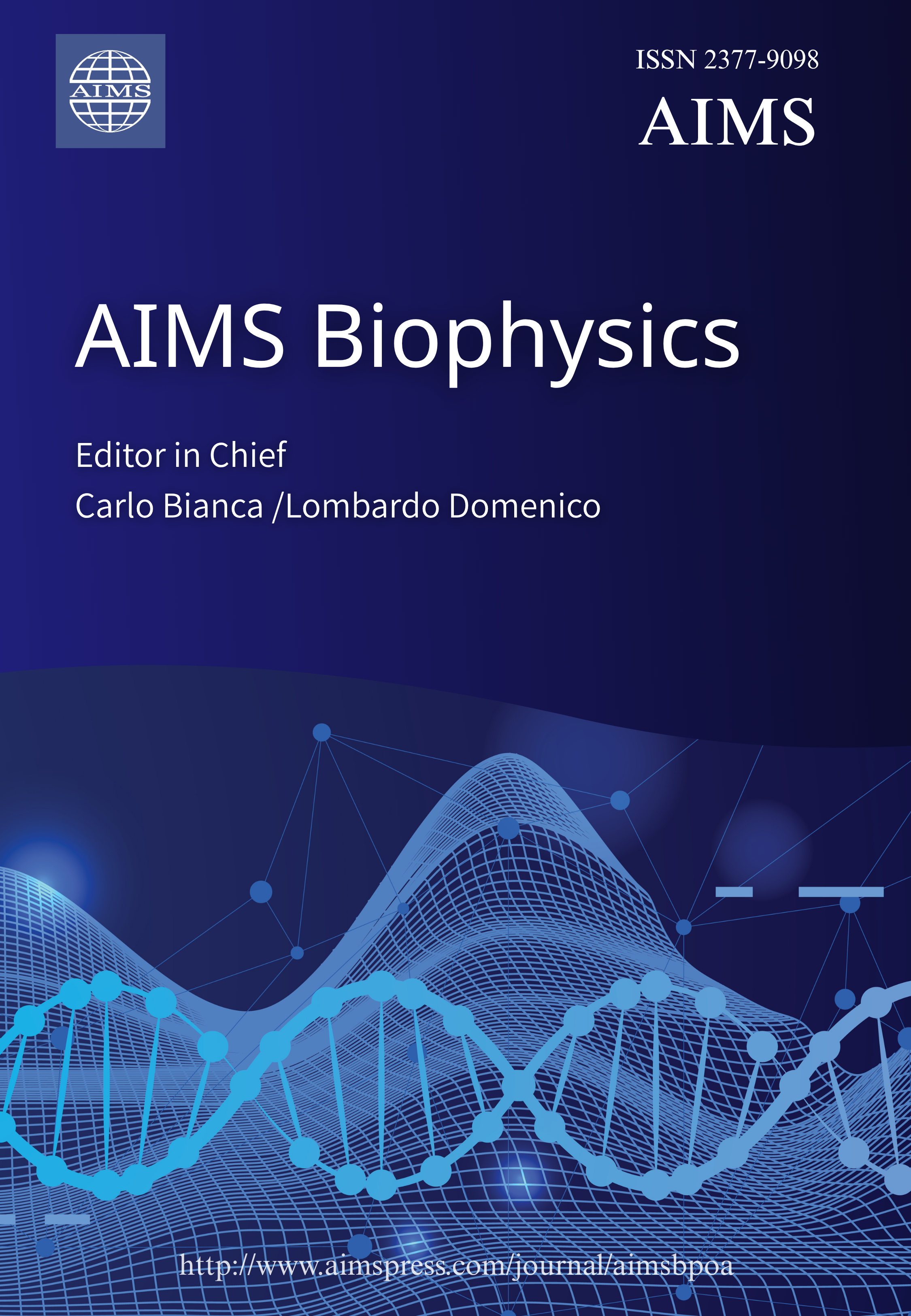
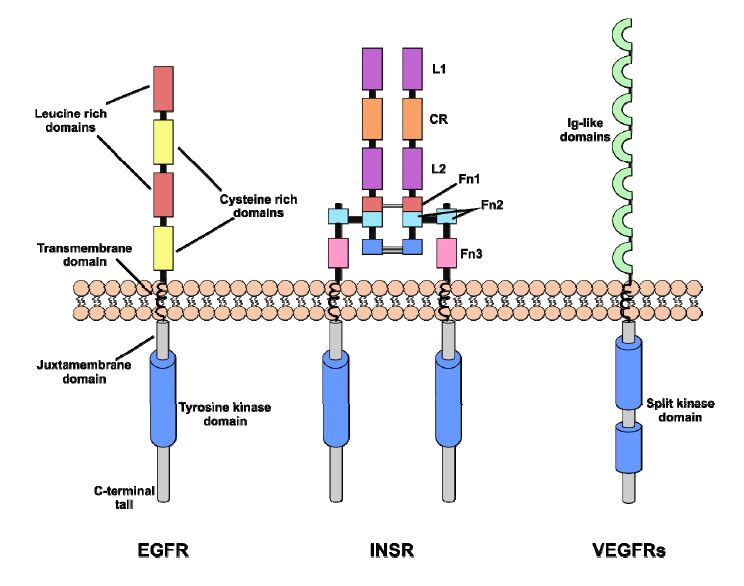
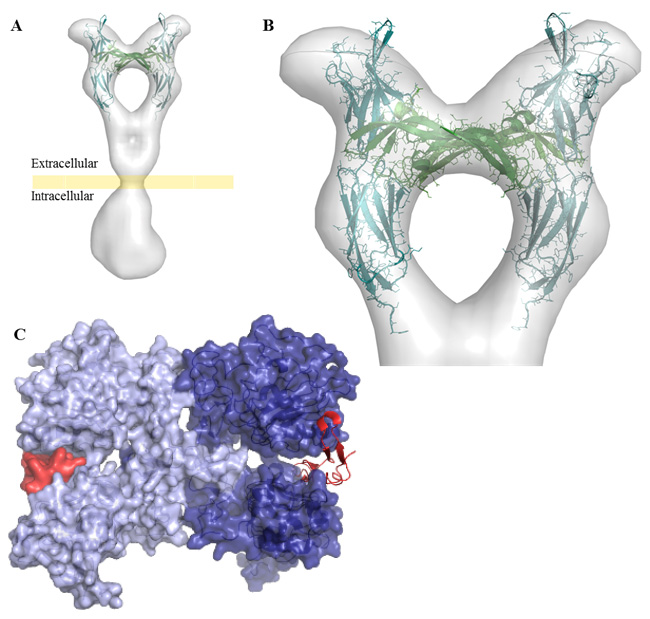
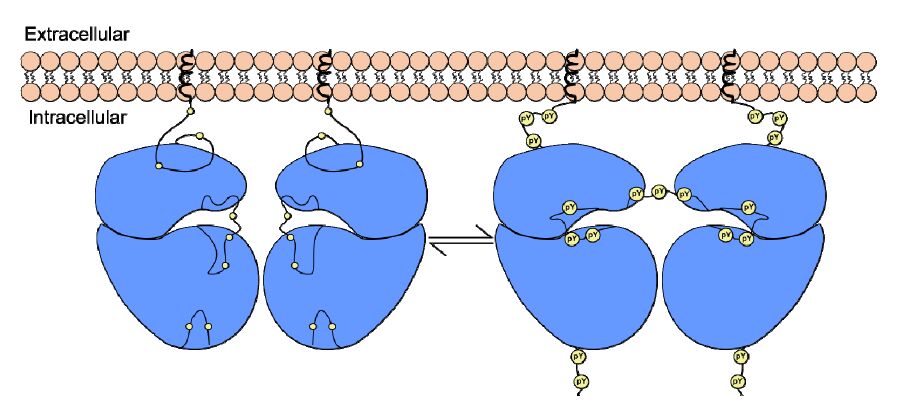
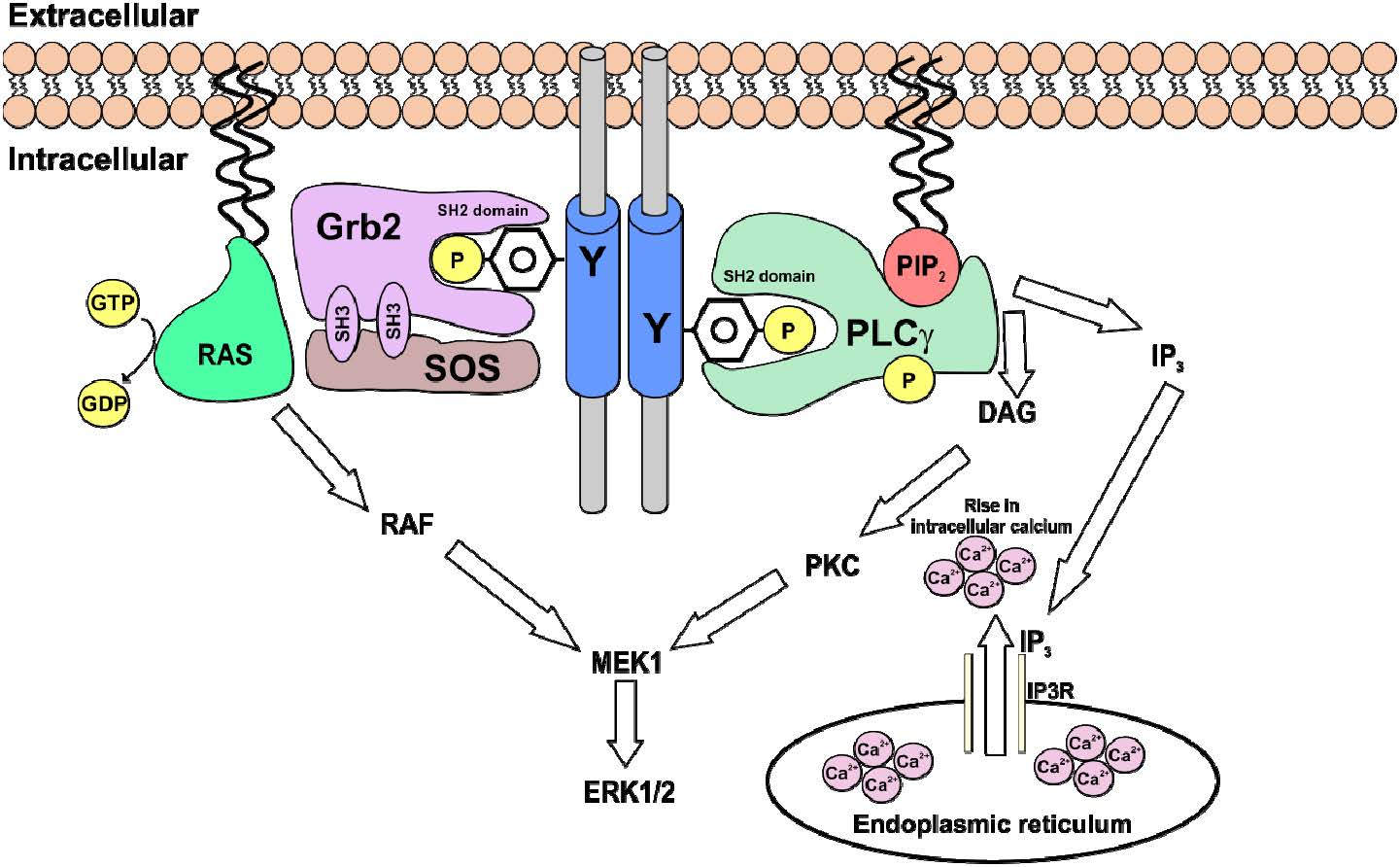
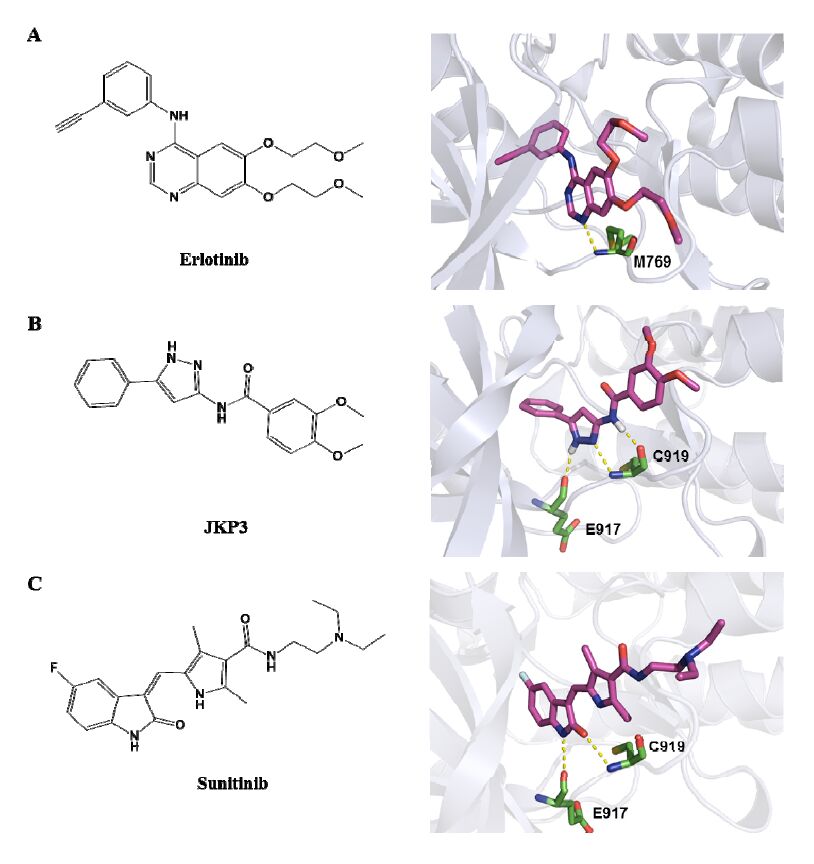


 DownLoad:
DownLoad: